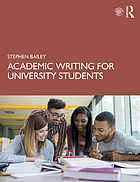
Thanks very much to Antoine Bissonnette & Faiza Ambreen Chowdhury for submitting their FACC 400 assignment to post on The Turret. This guest post looks at the use of cryptocurrency for philanthropy and economic management.
Cryptocurrency: Defying the Norms of Financial Institutions
by Antoine Bissonnette & Faiza Ambreen Chowdhury
In the landscape of global finance, a significant transformation is underway, particularly certain markets where the relevancy of traditional banking institutions is being challenged. Cryptocurrency, once regarded as a niche or speculative asset, is steadily becoming a cornerstone in many industries where traditional banking systems have either failed or cannot adequately meet the needs of the industry. This blog post delves into the pivotal role of cryptocurrency in such industries and emerging markets.
The Rise of Crypto Philanthropy
A growing number of charitable organizations are starting to embrace cryptocurrency donations. While there are organizations dedicated to accepting only crypto-donations like The Giving Block, nowadays even major charity funds such as UNICEF, Greenpeace and the Human Rights Foundation, all offer it as an option to potential donors [4].
There are multiple advantages this offers to both donors and recipients. Firstly, the use of cryptocurrency ensures transparency between donors and organizations, facilitated by the public logging of transactions inherent to cryptocurrency. So donors, recipients and the public can track where the money is going and witness the real-time impact of donations [1]. Digital currency also offers significant tax advantages for donors, the amount donated would not be subject to capital gains taxes, therefore deducted from the donor’s overall gross income [2].
For organizations, providing the choice for crypto donations helps broaden their funding sources. With the rise in popularity of bitcoin, there are more and more people who want to donate, but only have access to cryptocurrency. Another feature that can work in organizations’ favor is the price volatility of the digital currency market. Some organizations have been known to hold donations for some amount of time, to increase the value of donations with time [3].
While cryptocurrency philanthropy showcases the transformative potential of digital assets, its influence extends far beyond charitable donations. In emerging markets, cryptocurrencies are reshaping entire economies, offering financial inclusion and economic empowerment to those who have been left behind by traditional banking systems.
Countries like Venezuela and Argentina, facing hyperinflation and economic instability, have turned to cryptocurrencies not just as an investment but as a means to preserve wealth, transact, and participate in the global economy. In fact, cryptocurrency has become a beacon of hope in emerging markets, offering financial inclusion and economic empowerment to those who have been left behind by traditional banking systems.
Case Study: Cryptocurrency Adoption in Venezuela
In Venezuela, cryptocurrencies serve as a crucial tool against hyperinflation and government control. The country ranks high in global crypto adoption, driven by the necessity to preserve savings in a stable asset and the ease of conducting transactions even during power and internet outages [5] [6]. Moreover, Venezuela’s engagement with cryptocurrencies extends beyond just transactions; it has a significant presence in the crypto mining world, thanks to the country’s low electricity costs. This has led to the creation of a legal framework to support and regulate the mining industry, further solidifying the role of digital currencies in its economy [7].
Influence on Economic Stability in Argentina
Argentina presents another compelling case of crypto’s impact, where the devaluation of the local currency has pushed individuals and businesses towards cryptocurrencies. Stablecoins, in particular, have become popular for preserving the value of earnings and savings, acting as a digital stand-in for the much-sought-after US dollar. The adaptability of cryptocurrencies has allowed for innovative solutions like crypto debit cards, enabling Argentinians to make everyday purchases directly from their crypto wallets, thus circumventing the volatile local currency [8].
These case studies shed light on a broader trend within the financial system, where cryptocurrencies are not just speculative assets but vital financial tools. They offer a way to mitigate the impacts of economic volatility, and enable businesses to operate smoothly despite fluctuating local currencies. As new markets continue to evolve, the role of cryptocurrencies is likely to expand, potentially transforming the global financial landscape and making financial inclusion a tangible reality for millions.
In summary, cryptocurrency is revolutionizing global finance by challenging traditional banking norms. From transforming philanthropy to providing economic stability in emerging markets, its impact is undeniable. Cryptocurrency’s journey is just beginning, promising a dynamic future for finance worldwide.
References:
[1] “Is Cryptophilanthropy The Future Of Giving? | Altoo AG,” Jan. 12, 2024. https://altoo.io/crypto-philanthropy-and-the-future-of-future-of-giving/ (accessed Mar. 28, 2024).
[2] “Tax Deductions for Crypto Donations,” TokenTax. https://tokentax.co/blog/tax-deductions-for-crypto-donations (accessed Mar. 28, 2024).
[3] R. Stevens, “Crypto for Good: How to Donate Crypto and Who Accepts It,” www.coindesk.com, Oct. 12, 2022. https://www.coindesk.com/learn/crypto-for-good-how-to-donate-crypto-and-who-accepts-it/ (accessed Mar. 28, 2024).
[4] T. G. Block, “List of Nonprofits Accepting Bitcoin & Crypto Donations,” The Giving Block. https://thegivingblock.com/resources/nonprofits-accepting-crypto-donations/
[5] Al Jazeera. (2021, June 22). With Venezuela’s economy in crisis, cryptocurrency fills the gaps. https://www.aljazeera.com/news/2021/6/22/with-venezuelas-economy-in-crisis-cryptocurrency-fills-the-gaps
[6] Goschenko, S. (2021, May 28). A look at why Venezuela is the third country with the most crypto adoption – emerging markets bitcoin news. Bitcoin News. https://news.bitcoin.com/venezuela-numbers-cryptocurrency-adoption-factors/
[7] Abad, J. (2022, February 12). P2P payments spurred crypto adoption across Venezuela in 2021. Cointelegraph. https://cointelegraph.com/news/p2p-payments-spurred-crypto-adoption-across-venezuela-in-2021
[8] The Chainalysis Team. (2023, October 23). Latin America cryptocurrency adoption: Data and analysis. Chainalysis. https://www.chainalysis.com/blog/latin-america-cryptocurrency-adoption/















 Today we have another guest undergraduate student post, originally submitted as a class assignment for Communicating Science (CCOM 314).
Today we have another guest undergraduate student post, originally submitted as a class assignment for Communicating Science (CCOM 314).